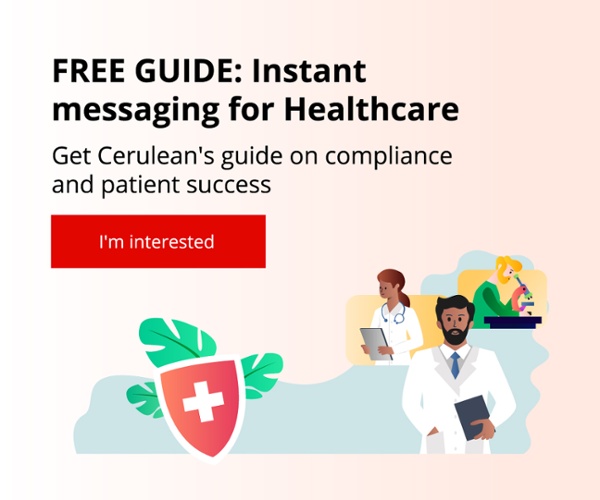Want an efficient and secure technology stack? Of course you do! Then it's important to factor interoperability into your roadmap when introducing instant messaging to your business.
It’s not enough to implement IM without making sure it plays nice with your existing software, tools and processes. Nearly half of American workers use IM apps on the job, making it one of the most popular communication channels out there. So let’s talk about what you should be watching out for when it comes to interoperability.
What is interoperability?
The Healthcare Information and Management Systems Society (HIMSS) defines interoperability as, ‘the ability of different information systems, devices and applications to access, exchange, integrate and cooperatively use data in a coordinated manner.’
Essentially, this means that different technologies can send information back and forth.
Harmonizing interoperability and instant messaging
The number of IM accounts is projected to grow by 1.9 billion over the next few years. But if IM is going to deliver on the promise of efficiency, you don’t want to have to jump through hoops when transferring data from one program to the other.
When implemented with interoperability in mind, messaging can speed up internal communications. This way, you can instantly deliver customer information (or patient records), archived financial data and more from employee to employee.
Lists solve everything. Before introducing IM software, look at your existing technology stack. Write a list. What kind of programs will need to ‘talk’ to your shiny new messaging software, and how will IM interact with them in turn?
Putting IM to work
IM interoperability use-cases abound. If you’re in the financial sector and use archiving software for auditable documents, it’s helpful if these can be accessed via IM.
The same goes for healthcare. There’s potential for massive time savings if you can transfer Electronic Health Record (EHR) documents via IM, and you face an unnecessary roadblock if you can’t. In the UK, for example, IM has been described as ‘a vital part of the NHS toolkit.’
See into the future. Try to anticipate how people with want to use instant messaging to interact with other digital tools and prioritize your interoperability plan based on those key touchpoints. Contact your providers to see if they have any advice or solutions in the works.
Security, security, security
We’ll make a wild assumption here: you want data to be safe from prying eyes. It’s worth exploring software options that are both encrypted and give you the option to host on your own server, according to your business’ security requirements.
This will also often mean reevaluating your existing archiving software to ensure that it’s saving documents in a shareable format. This won’t just pay off when it comes time to set up your IM; easily-transferable records ensure that your archives are platform-agnostic and can be transferred to new software whenever needed.
Introduce secure IM. IM shouldn’t cause a bump in your interoperability implementation roadmap. Find a secure option that maintains compliance while interacting with your existing software. Then – to quote Hemingway – roll out!





